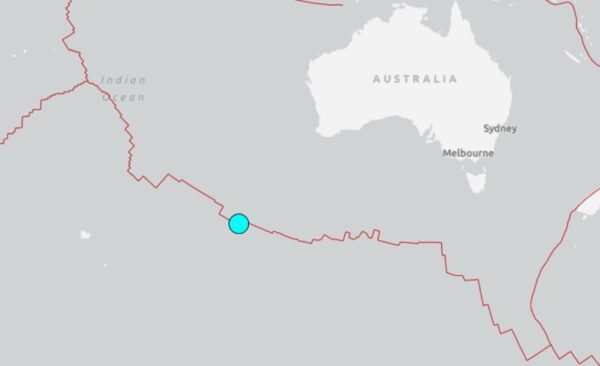Very strong 6.6 Magnitude Earthquake Strikes Southeast Indian Ridge

A very strong earthquake with a magnitude of 6.6 struck the Southeast Indian Ridge on Wednesday, April 16, 2025, at approximately 08:42 am local time (GMT+7). The earthquake’s epicenter was located in the Indian Ocean, along the tectonic boundary of the Southeast Indian Ridge. The event was confirmed and manually reviewed by seismological agencies.
A very strong earthquake with a magnitude of 6.6 struck the Southeast Indian Ridge on April 16, 2025, at 8:42 AM local time (GMT+7). The quake occurred at a shallow depth of 10 km (6.2 miles), causing severe shaking in the region. This earthquake is currently the largest recorded on that day and week globally. There are no immediate reports of casualties or significant damage associated with this event so far.
Location: The Southeast Indian Ridge is a remote, submarine tectonic boundary far from major landmasses and population centers.
Shaking: The quake produced severe shaking at the epicenter, but due to its remote oceanic location, significant impacts on human populations or infrastructure are unlikely.
Tsunami Risk: No tsunami warnings or reports of tsunami generation have been issued in association with this event as of the latest updates.
Casualties and Damage: There are no reports of casualties or damage, consistent with the location being far from inhabited areas.
This earthquake is among the strongest globally for the month of April 2025 and is the largest recorded so far today.
The Southeast Indian Ridge is an active tectonic zone where the Indo-Australian Plate and Antarctic Plate diverge, frequently generating moderate to strong undersea earthquakes.
The 6.6 magnitude earthquake on the Southeast Indian Ridge was a significant seismic event in a remote part of the Indian Ocean. While the quake was strong and produced severe shaking at the epicenter, its location away from populated areas means there is little risk to human life or infrastructure, and no tsunami warnings have been issued. Monitoring agencies continue to observe the region for any aftershocks or secondary effects.
